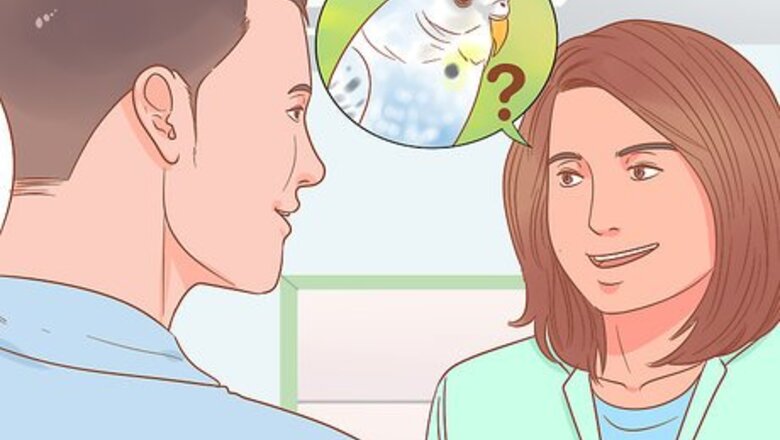
views
Pairing Budgies for Breeding
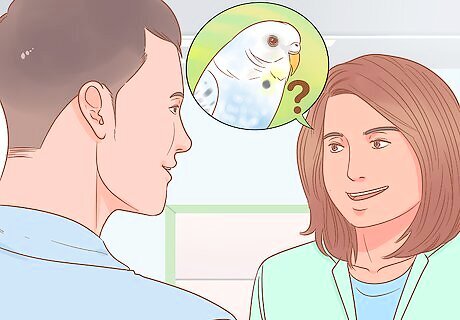
Purchase your birds from a reputable breeder or shop. Ask the breeder or shop owner for reviews from prior clients. Then, check that the birds are kept in a clean, healthy environment. Additionally, make sure that the birds aren't overcrowded and don't appear stressed. Observe all of the birds available for sale to make sure they look healthy and active. Do an Internet search to look for red flags that might signal the seller isn't reputable, such as complaints or bad reviews. Budgies typically cost about $10-$60 each, depending on where you purchase your bird.
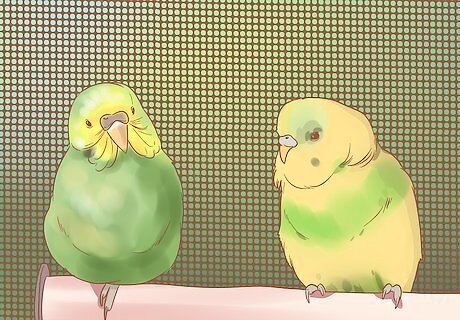
Choose 2 birds that are not related to each other to avoid birth defects. Birds that are related to each other will mate with each other if they are male and female. However, their offspring, if they survive, will have deformities or will be susceptible to illness. When you purchase your budgies, ask if they’re related. Birds hatched by different breeders are unlikely to be related. In some cases, a grandparent can mate with a grandchild with low risk to the baby budgies. However, it’s always best to pair birds that aren’t from the same family line.
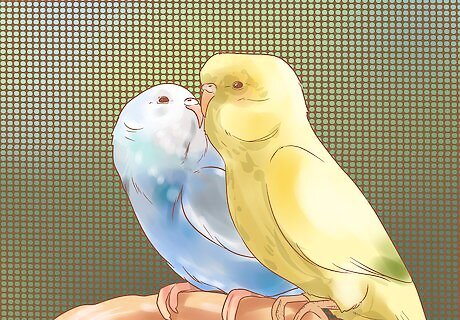
Look for a pair that is already bonded for best results. As long as they aren’t related to each other, birds that are kept in the same cage will mate more quickly than birds that don’t know each other. This is because the birds already get along, so you don’t have to wait until they get accustomed to each other. In some cases, the birds may be comfortable with each other if they’ve been kept in cages near each other. While their bond won’t be as strong, this is a good first step to bonding.
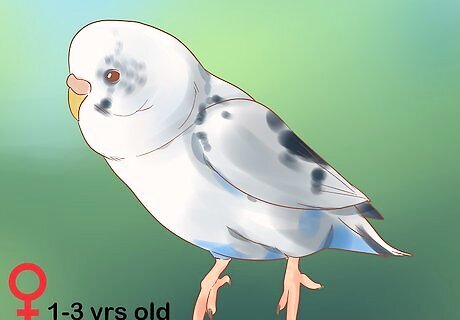
Choose a female between the ages of 1- and 3-years-old. Waiting until the female is at least 1-year-old usually results in healthier baby budgies. However, she’ll be most fertile before she reaches 3 years of age. If you aren’t sure how old a budgie is, you can take them to your avian vet for an evaluation. The vet can determine the approximate age of your budgie.
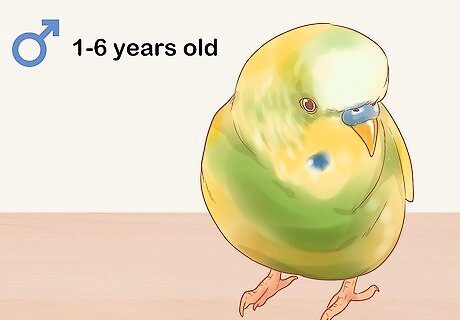
Pick a male between the ages of 1- and 6-years-old. Like female budgies, a male budgie will produce healthier babies if it’s at least 1-year-old. Unlike the female, male budgies will continue to produce healthy offspring until they reach 6 years of age. A vet can help you determine how old your budgie is if you’re unsure, so don’t hesitate to ask if you’re in doubt.
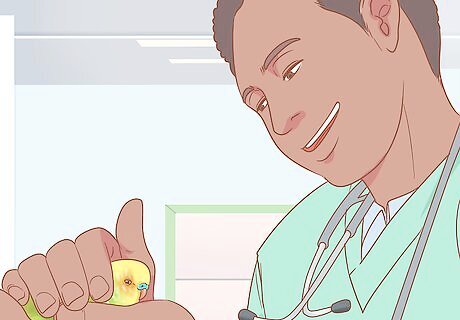
Take your budgies to an avian vet to verify they’re healthy. Make sure you work with an avian vet or a vet experienced in treating birds, as they have the expertise to treat budgies. They can help you avoid breeding budgies that are sick or deformed. Here are some things the vet needs to check to ensure good health: Both birds have no discoloration. Neither bird has discharge from its vents. Both birds have unblocked vents. Neither bird is lethargic. Both birds are eating and defecating with no issue. Neither bird is vomiting.
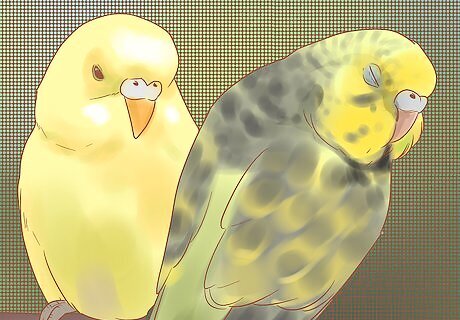
Place your budgies alone in a cage together. Provide the breeding pair with their own private cage. Not only will this make them more comfortable, it will also increase the likelihood that they’ll produce baby budgies. Coupling mimics their behavior in the wild, urging them to reproduce. If they start fighting, take one budgie out. Then, place the budgie in 2 cages next to each other. Watch them for bonding behavior, like playing together or preening each other through the cage bars. Once they are getting along, you can return them to the same cage.

Watch for mutual preening and feeding, which are signs of pairing. When the birds start to take care of each other, you’ll know they’re properly bonded. In most cases, they won’t start to breed until they bond with each other. You might also see them playing together and sleeping next to each other.
Setting Up the Habitat
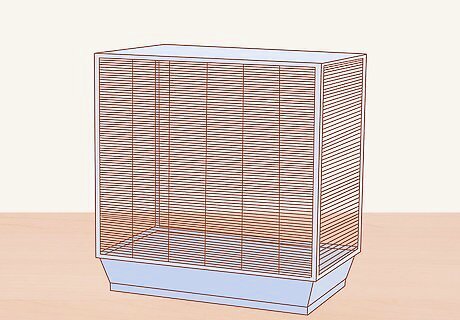
Choose cage at least 24 in (61 cm) x 16 in (41 cm) x 16 in (41 cm). This allows space for flying and time apart. Although your birds will enjoy each other’s company, they also need time alone. A big cage allows them to be active and spend time away from their partner. This supports your birds’ good health, making them better parents. Each breeding pair that you own will need its own cage. Don’t try to keep them in a cage together, as they’ll be less likely to mate.
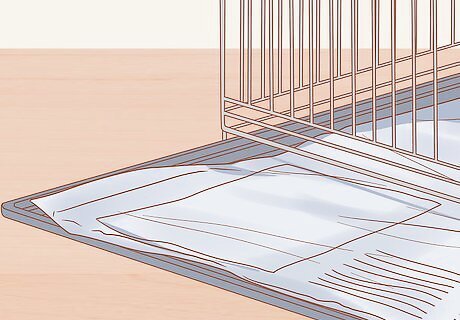
Cover the grate with newspaper, if there is one. The grate can be uncomfortable for your birds, and you want them to be cozy in their cage so they’ll mate. Newspaper is a cheap, safe option for a cage liner. Plus, your birds will enjoy tearing it up. Lay a couple of layers of newspaper over the floor of the cage.

Place 2 or more wooden perches and swings in the cage. You need enough perches and swings for both birds to use them at the same time. However, your birds will enjoy having extra perches and swings if the cage allows enough space. Wood is the best material for the perches. Avoid choosing plastic options, as your birds will enjoy chewing on everything in the cage.
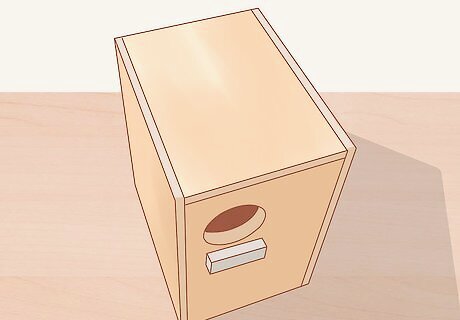
Attach a 6 in (15 cm) x 6 in (15 cm) x 10 in (25 cm) nesting box to the side of the cage. It's best to choose a side-opening nesting box, which makes it easy to safely access it. The nesting box will have a hole on one side that the female can use to enter the box. She’ll then lay her eggs inside, where they’ll be safe. The nest mimics how the birds prepare for mating in the wild. You can find a nesting box at a local pet store or online.

Place a concave dish inside the nesting box to prevent splayed legs. Choose a dish that’s about 1 inch (2.5 cm) deep and 6 inches (15 cm) in diameter. The eggs will rest inside the dish, which helps keep them in the nest. Then, the chicks will hatch in the dish, which provides a good surface for their legs. As another option, you can make or purchase a board that fits into the bottom of the nesting box. The board should have a concave dip carved into the center. Make sure that the dish is made from a nontoxic material, such as wood or glass.
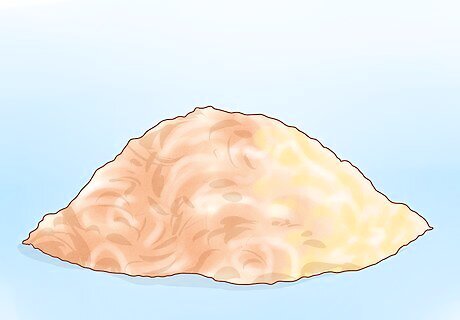
Create a soft layer of wood shavings in the nesting box, including the dish. The wood shavings provide a nesting material for the birds that’s similar to what they like in nature. The female bird will also enjoy chewing on the wood shavings as she gets ready to mate. In the wild, females typically pick up pieces of bark to chew on before they breed. The bedding also needs to go into the concave dish or hole at the bottom of the nest.
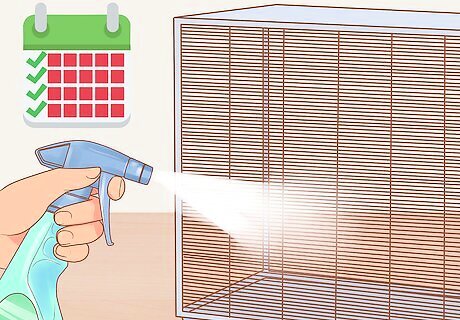
Clean the cage once a week. Empty, wash, and refill the feeder and water bottles. Remove the old bedding and wipe down the cage. Replace the bedding with fresh wood chips, then put the feeder and water bottles back into place. Wash and dry any toys kept in the cage. If there are eggs inside the nesting box, don’t change the bedding in the nest until all of the eggs hatch. However, you can still change the bedding in the cage itself.
Feeding Your Breeding Budgies
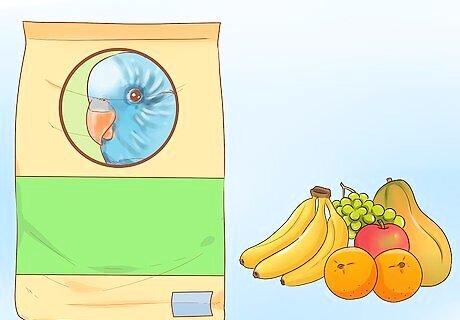
Fill a large feeder with budgie pellets, seeds, fruits, and veggies. Choose pellets that are formulated for budgies and keep them available at all times. Twice a day, provide a mix of seeds, fresh fruits, and veggies. Always use raw fruits and veggies that are chopped up into small bites for your bird. This will keep your budgie healthy and happy. Great fruits for your budgie include apple, banana, blueberry, grape, guava, kiwi, mango, melon, orange, papaya, peach, pear, pineapple, and strawberries. Good veggie options include broccoli, asparagus, Brussels sprouts, carrots, cauliflower, celery, cucumber, kale, pumpkin, radish, spinach, squash, sweet potatoes, ripe tomatoes, and yams. Your budgies will need more food once their chicks are born, so make sure their feeder is always full.
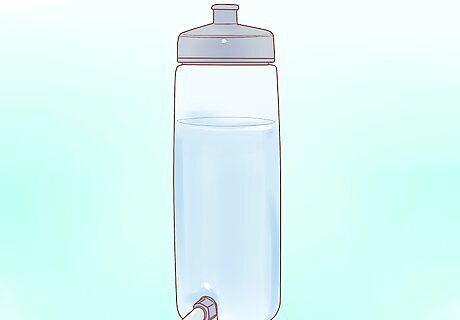
Hang two water bottles on the cage to ensure proper hydration. Empty and refill the water bottles every morning and evening to ensure your birds have constant access to fresh water. Your budgies will need more water while they’re breeding. To make sure they don’t run out, it’s best to use two water bottles. Plus, this limits the risk of your budgies fighting over water. Hang the water bottles on different sides of the cage.
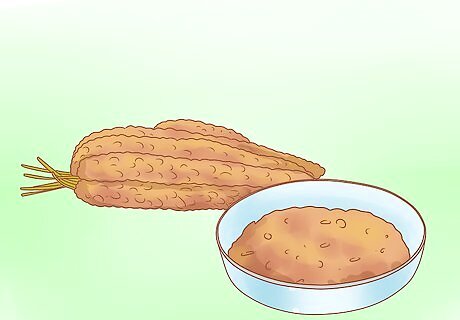
Provide plenty of food so that the parents won’t eat their eggs. Most budgies won’t eat their eggs, but they may if they feel that they don’t have enough food. Unfortunately, some budgies get into the habit of eating their eggs after doing it the first time. Budgies who continue to eat their eggs after you provide more food likely won’t be good breeders. If your budgies eat their eggs, add more food to their cage over the next breeding period. If this doesn’t stop the behavior, it’s best to find a new pair of budgies to breed.
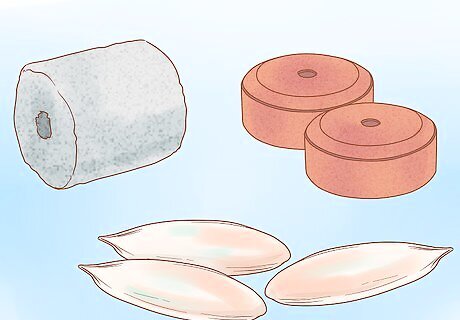
Supplement their diet with a mineral block, cuttlebone, and iodine salt spool. These supplements provide vitamins and minerals that your birds need to be healthy, such as calcium. Simply put the supplements into the cage, and the birds will eat them as they desire. You can find these supplements at a pet store or online.
Encouraging Your Budgies to Breed
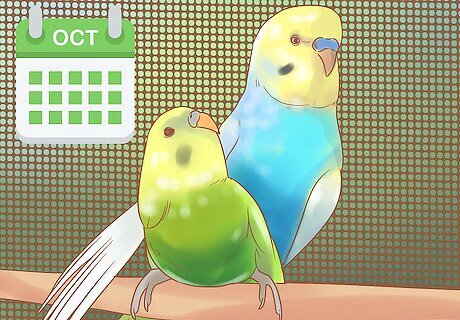
Expect your birds to breed in October through March or when it rains. The budgies typically begin breeding during the month of October and continue through March, but they also breed after heavy rains. In the wild, their favorite food source is more prevalent after rain, which causes them to breed. They may breed at any time of the year if it’s been rainy. Budgies are native to Australia, where it's warm October through March. If you live in the northern hemisphere, your budgies may mate during the months of April through September.
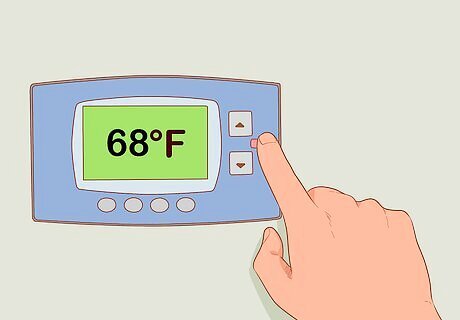
Keep the temperature of the room between 65 and 75 °F (18 and 24 °C). This is the perfect temperature for breeding. You can maintain an ambient air temperature of 65 and 75 °F (18 and 24 °C) in your home, or you can use a heater or fan to adjust the temperature in the area around the cage.
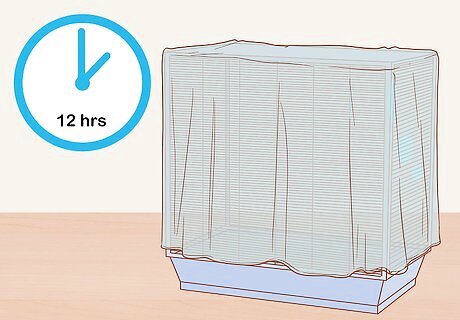
Cover the cage for 12 hours every night. The birds need time to rest so that they’ll be stress free. Covering the cage also makes it feel dark and cozy, so your birds are more likely to nest. Leave the cage uncovered for the other half of the day so your birds will get proper light. Cover and uncover the cage at the same time each day. For example, you may remove the cover at 6:00 a.m. and replace it at 6:00 p.m.
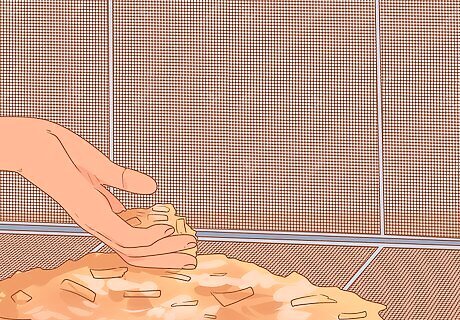
Line the bottom of the cage with wood chips for the female to chew. This helps her get in the mood to breed and nest. Replace soiled wood chips with fresh ones daily so that the mother bird will have clean wood chips to chew. This is a behavior that budgies do in the wild before breeding, so encouraging your budgies to do it can help them mate.
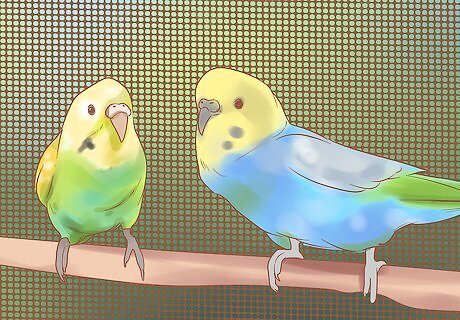
Watch for breeding behavior, which will be brief and repeated. When the male wants to breed, he’ll approach the female making chattering sounds. Then, he’ll tap on her beak. If she wants to breed, she’ll lower her head and raise her tail so that the male budgie can balance on top of her. They’ll then mate, which will last just a few minutes. Not every mating will result in fertilized eggs, so the budgies will repeat this mating behavior often.
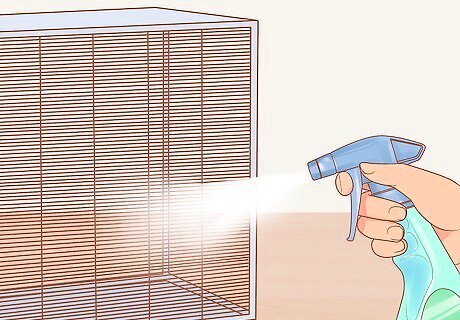
Spray the birds with water to mimic their natural mating season. Since budgies mate after rain, spraying them with a mister can help get them in the mood. Spray them several times a day for a few days to mimic rain. It may encourage them to mate. Spraying them will also help their coats look nicer, as it encourages them to preen each other.
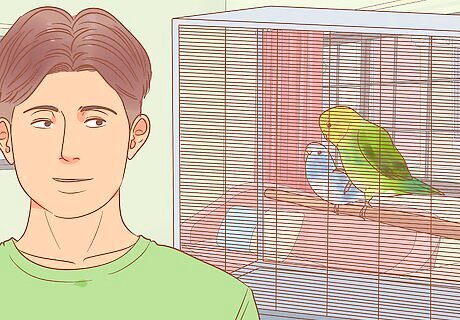
Leave the birds alone so that they will breed. Don’t check on your birds too often or constantly open their cage. Give them time to get comfortable with each other so they’ll want to mate. Don’t let loud sounds disturb your birds, either. Do your best to create a calm, relaxing environment.
Watching for Eggs and Chicks
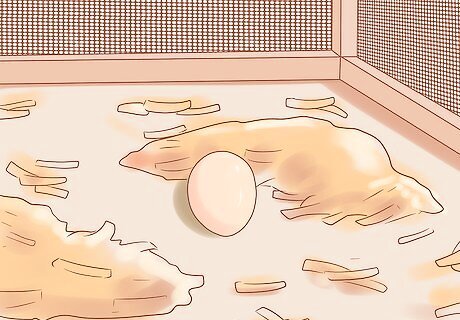
Wait 10 days after a successful breeding for the first egg. Once the birds have mated and the eggs are fertilized, the female will begin laying eggs in about 10 days. She will lay 1 egg at a time, so you'll see a single egg appear in the nesting box. Sometimes budgies need to breed several times before the female’s eggs are fertilized.

Expect your female budgie to lay 4-8 eggs over about 2 weeks. After the female lays her first egg, there will be a 1-2 day gap between each egg in her clutch. She will continue to lay an egg every day or 2 until they are all laid. In captivity, she’ll likely lay 4-8 eggs in total. She will lay her eggs in the nesting box.
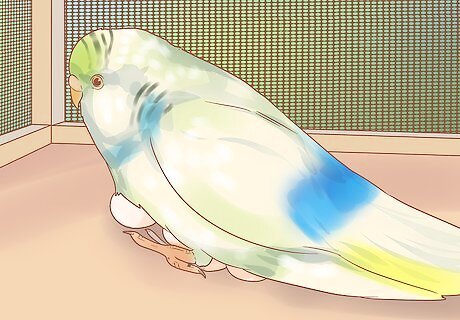
Make sure your budgie sits on the eggs after the 3rd one is laid. Your female bird won’t start incubating the eggs until she’s laid at least 2 or 3. That means you’ll likely see 1 or 2 eggs sitting neglected in the nest after she’s first started laying. This is normal, so don’t worry if your bird is not being attentive in those first few days. The female budgie will always be the one to sit on the eggs. The male shouldn’t go into the nesting box.
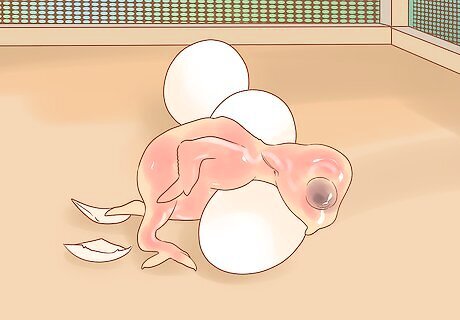
Watch for hatching after 18-21 days of incubation. When they start to hatch, you’ll notice cracks appearing on the egg shells. It may take awhile for the budgies to hatch, but don’t help them. If they’re healthy, they’ll emerge from their shells after a few hours. If you have eggs that haven’t hatched after 22 days, it’s best to throw them out. They likely won’t hatch. If they do, the babies won’t be healthy.
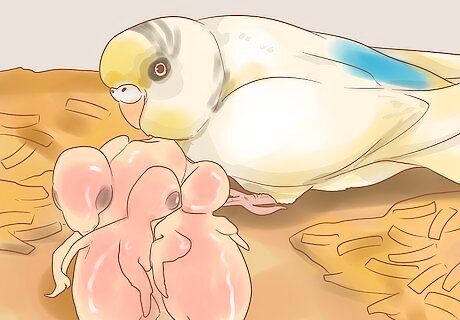
Make sure the mother is caring for her baby budgies. Budgies generally take good care of their young, but keep an eye on the little family to make sure none of the babies are being neglected. If there are several babies, the mother may neglect the littlest chicks. You may want to hand raise baby budgies that are being neglected.




















Comments
0 comment